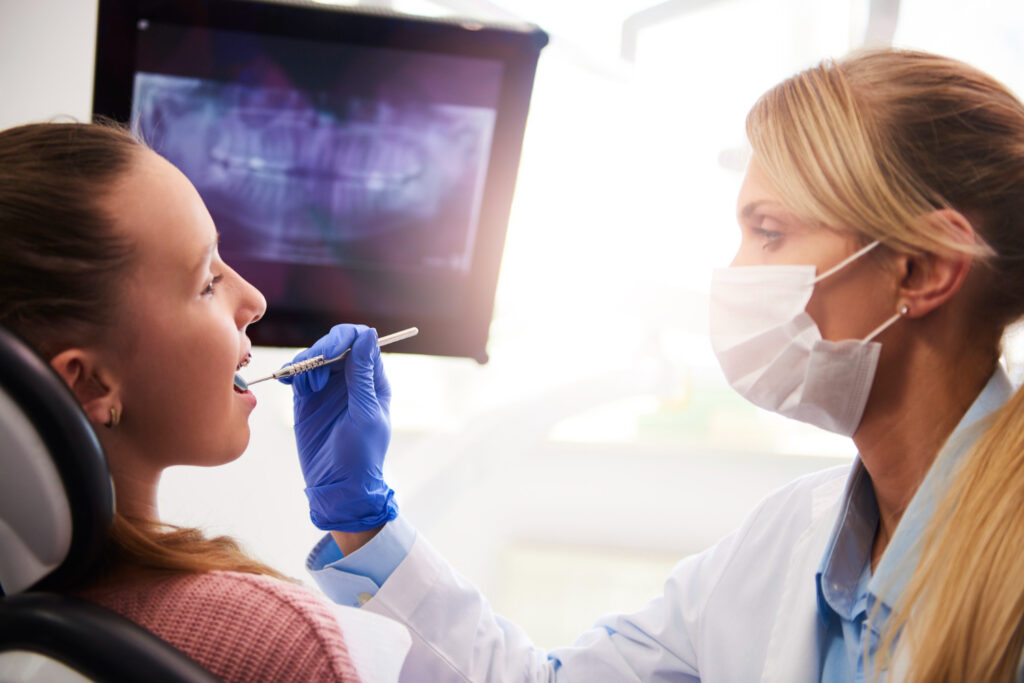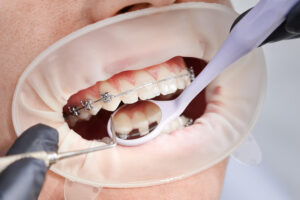Getting braces is a big step toward achieving a healthier, straighter smile. However, knowing what to expect at each stage can make the process smoother and less overwhelming. The braces journey is not just about the final result; it’s about the progress you make at every stage. From your initial consultation to the day your braces come off, each step plays a key role in creating a smile you can be proud of.
1. The Initial Consultation: Setting the Foundation for Your Braces Journey
Your journey begins with the initial consultation, which is an essential part of planning your treatment. During this visit, your orthodontist will evaluate your teeth, mouth, and jaw to determine the best treatment options for you.
What to Expect
The first consultation is an opportunity to get to know your orthodontist and understand the treatment plan. You’ll begin by discussing your goals for your smile and any concerns you have about your teeth. The orthodontist will also assess your current oral health to see if you need any additional treatments before starting braces.
This appointment usually includes a few key steps:
- A full dental examination to check for any issues with your teeth or gums.
- X-rays or digital scans to get a clear picture of your teeth and jaw alignment.
- Impressions or molds to create a model of your teeth.
- A discussion of your options for braces, which could include traditional metal braces, ceramic braces, or clear aligners.
Questions to Ask
To make sure you’re fully informed, it’s important to ask questions about the treatment. Some helpful ones include:
- How long will my treatment last? (This can vary depending on your specific case.)
- What kind of braces are most suitable for me?
- Will I need any other procedures, such as teeth extractions or expanders?
- What should I expect in terms of pain or discomfort?
2. Getting Your Braces: The Start of Your Braces Journey
Once you’ve had your consultation and decided on a treatment plan, it’s time to begin the process of getting your braces. This is the first step in the active phase of your treatment. Although the idea of having braces might feel intimidating at first, understanding what to expect can help you feel more at ease.
Preparing for Your First Appointment
Before your first appointment to get your braces, you’ll likely be given some instructions. You may need to brush your teeth thoroughly and avoid eating before the appointment. It’s also a good idea to wear comfortable clothing, as the process can take a couple of hours.
Your orthodontist will explain the steps ahead of time, so you know exactly what will happen during the procedure. While it may take a little time to get everything in place, it’s not a painful experience. Many patients find that the most uncomfortable part is the slight pressure on their teeth as the braces are applied.
How the Braces Are Applied
The process of getting braces typically takes 1 to 2 hours. Here’s a step-by-step breakdown of what happens:
- Cleaning and Preparing Your Teeth: Your teeth will be cleaned thoroughly to remove any plaque or debris. This helps ensure the brackets will bond properly.
- Placing the Brackets: Small, square brackets are placed on each tooth. These are the parts of the braces that will hold the wire in place. The brackets are adhered using a special dental adhesive.
- Attaching the Archwire: Once the brackets are in place, an archwire is threaded through them. This wire is what helps move your teeth into the desired position.
- Securing the Braces: Rubber bands or elastic ligatures are used to hold the archwire in place. These can come in a variety of colors, giving you some fun options if you like.
Post-Application Care
After the braces are applied, you might feel some discomfort, which is completely normal. It’s common to experience soreness in your mouth and pressure on your teeth as they start to move into position. Here’s what you can do to manage:
- Pain Relief: Over-the-counter pain relievers can help alleviate discomfort. Ask your orthodontist for advice on the best pain management options.
- Avoiding Certain Foods: For the first few days after getting braces, it’s helpful to stick to softer foods. Avoiding hard, chewy, or sticky foods can prevent damage to your braces.
- Caring for Your Braces: Maintaining good oral hygiene is crucial during treatment. You’ll need to brush and floss carefully around the brackets and wires to keep your teeth clean and avoid plaque buildup.
3. The Adjustment Period: Adapting to Your Braces Journey
After the initial placement of your braces, you’ll enter the adjustment phase. This is when the real changes start to happen as your teeth shift into their correct positions. You will visit your orthodontist regularly to ensure your treatment is progressing as planned.
Regular Adjustments
As your teeth begin to move, the archwire will need to be tightened to maintain consistent pressure on your teeth. This is done during routine adjustments, typically scheduled every 4 to 6 weeks. Here’s what to expect during these appointments:
- Tightening the Archwire: Your orthodontist will adjust the archwire to apply the right amount of pressure to your teeth, ensuring they continue to move into the correct position.
- Changing Elastic Bands: If you’re using rubber bands, these may need to be replaced or adjusted depending on your treatment plan.
- Monitoring Your Progress: Your orthodontist will check how your teeth are shifting and make any necessary adjustments to the plan.
Adjusting Your Routine
As you get used to wearing braces, there are a few things to keep in mind:
- Eating with Braces: After an adjustment, your teeth might feel sore for a few days. Eating softer foods like yogurt, mashed potatoes, or pasta can make meals more comfortable during this time. You may also need to avoid hard, crunchy, or sticky foods that could damage your braces.
- Brushing and Flossing: Brushing and flossing become more important as your braces move your teeth. You’ll need to brush more carefully, using a soft-bristled toothbrush and flossing with a threader or orthodontic floss to clean between the brackets.
- Managing Discomfort: Some discomfort after adjustments is normal. If necessary, orthodontic wax can be applied to any brackets that irritate the inside of your mouth.
Common Challenges
While the adjustment period is essential for achieving your desired smile, you might encounter a few challenges, such as:
- Mouth Sores: New braces can sometimes cause irritation to the inside of your lips and cheeks. Using orthodontic wax can help alleviate the pain by covering any sharp edges on your braces.
- Changes in Speech: Some people experience a temporary change in speech after getting braces, especially if you’re wearing retainers or rubber bands. This usually improves as you get used to the braces.
4. Special Considerations During Your Braces Journey
While the braces journey typically follows a predictable path, some people may require special treatments or experience issues along the way. These additional steps can help speed up the process and ensure your teeth are moving as expected.
Common Issues and How to Address Them
Occasionally, issues can arise during the course of treatment. Here are some common problems and solutions:
- Loose Brackets or Wires: If a bracket comes loose or a wire begins to poke out, it’s important to contact your orthodontist for a quick fix. In the meantime, you can use orthodontic wax to cover any sharp edges that might irritate your gums or cheeks.
- Elastic Bands Not Fitting Properly: If you are using rubber bands and they don’t seem to fit correctly, make sure you contact your orthodontist. It’s crucial to wear them as prescribed to ensure your teeth move properly.
- Pain or Pressure: While some discomfort is normal, excessive pain could indicate a problem. Let your orthodontist know if something doesn’t feel right.
Additional Treatments to Speed Up Your Progress
In some cases, your orthodontist may recommend other treatments to help speed up your progress:
- Headgear: If you have significant bite issues, your orthodontist may recommend headgear to help move your teeth and jaw into the correct position.
- Bite Turbos: For patients with more complex bite issues, bite turbos may be used to help align the teeth properly.
- Elastics: Rubber bands, or elastics, are often used to correct bite issues, like overbites or underbites. These elastics need to be worn as directed to ensure the best results.
5. Maintaining Progress: Staying on Track with Your Braces Journey
To keep your braces journey on track, consistency is key.
Staying Consistent with Appointments
Regular visits to your orthodontist are essential for ensuring your treatment stays on course. These appointments allow your orthodontist to monitor progress and make any necessary adjustments.
Keeping Your Braces Clean
Proper oral hygiene is crucial during treatment:
- Brush after every meal to remove food and plaque.
- Use orthodontic floss or a water flosser to clean around the brackets.
- Consider fluoride mouthwash to protect against cavities.
Avoiding Harmful Habits
To avoid delaying your treatment or damaging your braces, avoid:
- Chewing on hard objects like pens or ice.
- Eating sticky or hard foods.
- Touching or fiddling with your braces.
6. The Final Stages: Preparing for the End of Your Braces Journey
As your treatment nears completion, there are still important steps to take to maintain your results.
Retainers: Key to Long-Term Results
After your braces are removed, you’ll likely wear a retainer to keep your teeth in their new positions. Retainers can be fixed or removable, and they play a critical role in maintaining your smile.
Follow-Up Appointments
Even after your braces come off, follow-up appointments are necessary to ensure your retainer is working properly and your teeth stay aligned.
Start Your Journey to a Confident Smile with Bowers Orthodontics
At Bowers Orthodontic Specialists, we’re here to provide you with personalized care in a comfortable and welcoming environment. Whether you’re exploring options for your child or considering braces or Invisalign for yourself, our experienced team in Bloomington, IL, is dedicated to helping you achieve the smile you’ve always wanted.
Contact us today to schedule your consultation and learn about the best treatment options for your needs. We look forward to partnering with you every step of the way!





